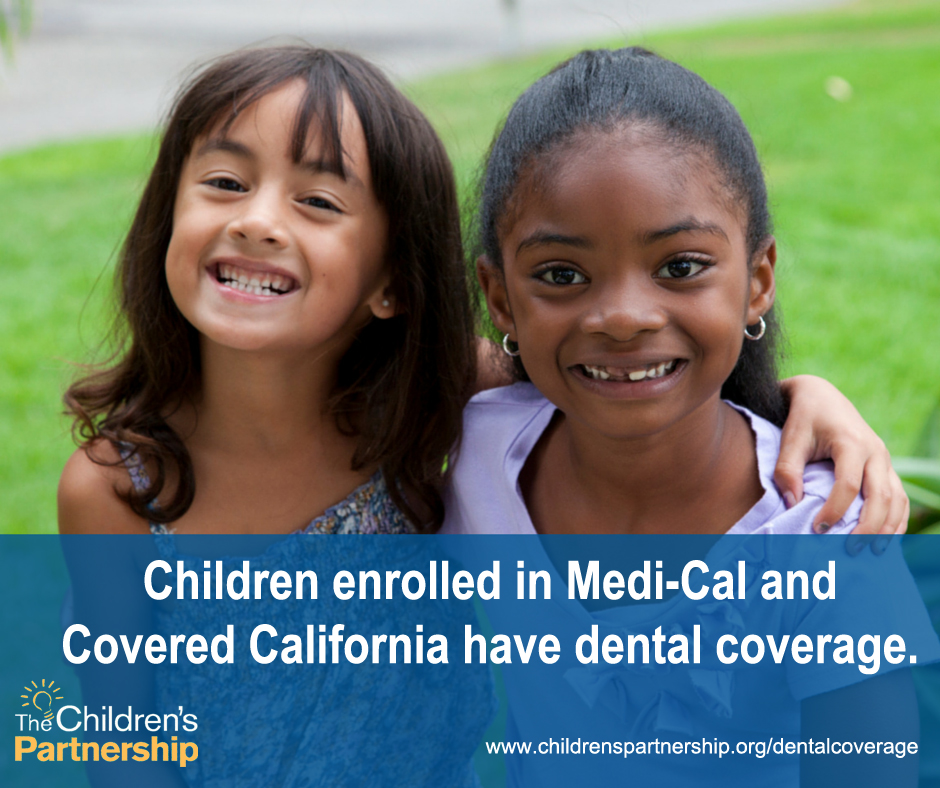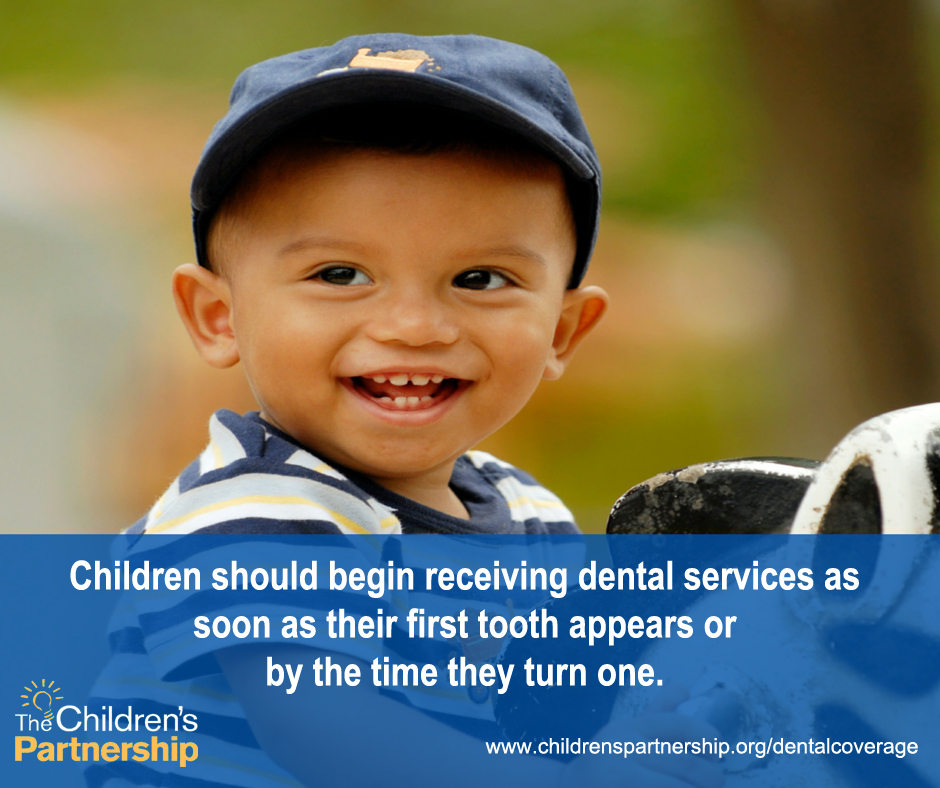Providing a young child with oral health care helps ensure long-term oral health for the future. But today, California’s children are facing an oral health care crisis. In 2013, over half of the children enrolled in Medi-Cal did not receive an oral health visit through the program and, at 57 percent, the numbers were no better for the program’s youngest enrollees, aged zero to three. For pregnant women, one study found that over half of all pregnant women had experienced a dental problem and, of them, six in ten were not receiving oral health care. The need for urgent action to address the interconnected needs of both generations is evident.
As we explore ways to better meet the oral health care needs of children and families, early childhood home visiting programs can be a critical resource in reaching families with information about good oral health practices early in their child’s life. The strategies used by home visiting programs to achieve results—like the frequency and duration of visits to the family, early intervention, anticipatory guidance, and education—can be effective in improving children’s oral health.
There is also a growing recognition that the dentist is not the only provider that can address children’s oral health needs. A team approach is necessary to provide the comprehensive oral health education, preventive services, and care management families need. Home visitors can be an integral part of the team, especially given the severe lack of oral health providers available to treat children and the systemic barriers that pregnant women and young children face in getting care.
Therefore, it only makes sense to build a stronger connection between home visiting and oral health in a way that maintains the fidelity to the home visiting model and does not overburden home visitors with onerous requirements.
Our recommendations for next steps:
- Provide home visitors with the training and resources they need to incorporate oral health practices into their activities.
- Collect oral health data from home visiting programs so that we can better understand the impact of home visiting on the oral health of children and families, and develop the evidence base for funding to include oral health practices in home visiting programs.
- Create stable funding streams to support home visiting overall so that it is a viable avenue to bring preventive services to children and families, including preventive oral health services.
These next steps create an opportunity to give home visitors the tools they need to better serve the oral health needs of children and families. They also give advocates the opportunity to increase awareness in both the home visiting and oral health communities on the importance of this strategic connection. Together, we can create a system of oral health care in which early childhood home visitors are a key part.
You can read more details about each of our recommendations in “Healthy Mouth, Healthy Start: Improving Oral Health for Young Children and Families Through Early Childhood Home Visiting.”
During February, we commemorate Children’s Dental Health Month and, in doing so, reflect on the state of oral health for kids in California and what needs to be done to improve it. Tooth decay is the number one childhood chronic disease—two to three times more common than childhood obesity or asthma. Yet it is preventable. Here is some work The Children’s Partnership is doing to promote solutions to the problem.
- Helping families understand their dental benefits and how to use them. Many families in California may not know that if their child is enrolled in health coverage through Medi-Cal or Covered California, he or she also has dental coverage. Schools, businesses, doctors, nurses, and communities all have a role to play in helping families understand how to get the dental care their children need. That’s why we created brand new flyers to help families navigate dental coverage for their children. It will be especially important to educate families whose children may not have had coverage in the past, such as low-income undocumented children who will be newly eligible for Medi-Cal later this year. We will be sharing these flyers through schools, clinics, and other partners. Please help us get them out to families, too!
- Bringing dental care to children where they are in the community. Underserved children, who suffer from poor oral health, face significant obstacles in obtaining dental services. Many low-income families have difficulty getting needed dental services because they lack affordable transportation, lose pay when they miss work, and face other socioeconomic barriers. Bringing care directly to them bypasses these barriers and, for many, may be the only option for getting care. The Virtual Dental Home (VDH) is an innovative and cost-effective system for providing dental care to California’s most vulnerable children in community settings. The VDH model uses technology to connect specially trained dental hygienists and assistants, located at community sites (such as schools and Head Start sites), with dentists in offices or clinics to facilitate comprehensive dental care. We are sponsoring legislation—AB 648 (Low)—which would provide a one-time start-up investment in training, equipment, technical assistance, and other support that providers need to begin implementing the VDH so that it can be brought to underserved communities across the state.
- Encouraging a sustainable system of care for children in Medi-Cal. Now that more kids than ever have health and dental coverage, we need to make sure they can use it. Approximately 5.6 million California children are enrolled in Medi-Cal, but fewer than half of these children are receiving necessary dental care. While progress has been made, Medi-Cal continues to fall short of meeting the dental care needs of the state’s most vulnerable children. We need a sustainable system that brings care to children in community settings, utilizes community health workers to educate and engage families and coordinate care, and provides enough dentists in the right places to address the restorative dental care needs of children. For example, the State should implement a program like the ABCD program in Washington State and a similar program in Alameda County that supports a whole team to address the oral health needs of young children.
- Shaping the State’s oral health plan. This year, TCP is helping to develop the State Department of Public Health’s statewide oral health plan, led by the newly appointed Dental Director, to ensure the plan makes meaningful recommendations for improving children’s oral health and action is taken to begin timely implementation. All of California’s kids deserve the dental care they need to not suffer in pain, do well in school, and avoid costly health problems later on in life.
Please join us in helping families understand their children’s dental coverage and how to get care by promoting these much-needed statewide systems. Contact Jenny Kattlove, Senior Director of Programs, with any questions at jkattlove@childrenspartnership.org.
Last week, the DentaQuest Foundation, one of our oral health partners, hosted fellow grantees and stakeholders at the annual Oral Health 2020 National Network Gathering in New Orleans with the theme: “Progress, Possibility, and Power.” At the convening, organizations from across the nation discussed how the network can work together towards the bold goals for 2020, including eradicating dental disease in children, and what can be done now.
To guide this discussion, keynote speaker Paul Schmitz, CEO of Leading Inside Out,talked about the values of collective impact and shared some best practices for developing strategies that are inclusive, engaging, and conscious of different organizations’ strengths and weaknesses. Paul urged everyone in attendance to look for leadership where no one else is looking and to recognize that social change always comes from the leadership of many.
The Children’s Partnership couldn’t agree more. From the very start, we have worked with an understanding of the importance of partnerships and networks, and regularly team up with diverse groups across the state to help children thrive. For example, our work with the First 5 Association of California (an association of county-level quasi-public organizations that use public funding and localized programs to meet the health, education, and other needs of young children) led to the Association providing greater input into state policy decisions regarding the future of children’s oral health. Additionally, a Los Angeles stakeholder group we convene has been able to leverage the collective impact of a variety of advocate and provider voices to make greater change in California. And now, TCP is playing a leadership role in the western region of the DentaQuest Foundation’s Regional Oral Health Connection initiative to support and sustain an aligned movement built on the work of oral health stakeholders at the state level.
The Oral Health 2020 convening is a great example of collective impact as it embodies the sense that it takes a network to create large-scale change and achieve the goals of Oral Health 2020. But the power of our network alone is not enough to successfully reach these targets, especially for kids, and that is where we ask you to step in. You can help us amplify the message to improve oral health for all children. In California, TCP is working to encourage policymakers to fix the state’s broken dental care program and develop new workforce models to expand access. Organizations can share our dental flyers to connect children to dental coverage and care. And together, let’s focus on our youngestwho stand to benefit the most. To get involved, contact Jenny Kattlove atjkattlove@childrenspartnership.org.
Learn more about Oral Health 2020 and the gathering in New Orleans by searching the hashtag #OH2020inNOLA on Twitter.

PHOTO: TCP’s Jacob Vigil, DentaQuest Foundation President Ralph Fuccillo, and partners in the network collaborating at the Oral Health 2020 convening
Today, I had the opportunity to present to the Little Hoover Commission, an independent state oversight agency, on ways to help ensure children enrolled in Medi-Cal get the dental care they need.
The Commission’s review, requested by Senator Richard Pan and Assemblymember Jim Wood, is in response to a recent audit of the State’s Medi-Cal dental care program that found poor access to care and lack of oversight of the program that put the more than five million children enrolled in the program at higher risk for dental disease.
When children’s oral health is neglected, they needlessly suffer and lose the opportunity to realize their full potential. Poor dental health can disrupt normal childhood development and seriously damage overall health. Children with poor oral health end up in the emergency room, and they miss school due to dental problems.
The audit report and the efforts of the Little Hoover Commission—along with the fact that we now have a state dental director to lead statewide efforts to improve the oral health of California’s residents—provide the impetus and tools to finally make real change and put California on the path to ensuring its children have the optimal oral health care they need to stay healthy and succeed in school and life.
The Children’s Partnership’s recommendations to improve children’s oral health are threefold:
1. Bring Care to Where Children Are. If we are truly committed to the oral health of all children, bringing timely dental care to where they are can make a big difference. The Virtual Dental Home brings care to children in schools, Head Start sites, or other community settings. We were pleased to see the enactment of AB 1174 in 2014, and we hope to see enactment of AB 648 in the near future to continue to expand this cost-effective approach to dental care for children.
2. Invest in Preventive Care for Young Children. Young children enrolled in Medi-Cal receive dental services at disproportionately low rates, even though their needs deserve particular attention. Early preventive dental care results in better oral health as well as overall health and well-being over a lifespan. The State needs to address the needs of young children, which could include raising reimbursement rates for providers who see this population or raising rates for particular services that impact this population, such as preventive services.
3. Make the Most of Our Workforce. We can no longer assume that the dentist is the only provider that can address children’s dental care needs. It takes a team to provide the comprehensive oral health education, care management, and treatment families need. Dental hygienists and assistants are helping to bring care to where children are through the Virtual Dental Home. Community health workers can play a vital role in educating families about the importance of good oral health and how to achieve it, as well as connecting families to services. And home visitors can also play a critical role in getting families off to a good start. California should explore how to adopt and support best practices for expanding outreach, education, and services to improve dental care. Improving the oral health of California’s underserved children is a top priority for The Children’s Partnership, but it will take a coordinated effort of the Administration, the Legislature, and stakeholders to truly make a difference. We look forward to continuing to work with the State to ensure that Medi-Cal’s children—more than half of all of California’s children—have the good oral health they need to be healthy and succeed in life.
Good oral health is critical to children’s ability to grow up healthy and succeed in school and life. Yet, dental disease remains the number one chronic health problem among children. And the numbers are particularly worrisome for our youngest.
Despite the availability of dental care through Medi-Cal, California’s youngest children do not receive the dental care they need. Nearly 1.7 million children aged 0–5 are enrolled in the program and, in 2013, 63 percent did not have a dental visit in the past year. This is unacceptable when we know that early preventive dental care results in better oral health, overall health, and well-being over one’s lifespan. By the time children reach the third grade, 71% have experienced tooth decay.
While there are many roots to this problem, a leading issue is the lack of providers. Many providers are not willing to provide dental care to young children enrolled in Medi-Cal due to low-reimbursement rates. Even those open to serving children often deny services for three-year-old children. And when many younger children do get care, they are not getting appropriate care for their age. Pediatric dentistry encompasses disciplines, techniques, and skills required to meet the unique needs of young children based on their developmental level, including behavior guidance and sedation.
The Children’s Partnership is working with the First 5 Association to ensure full access to dental health care for California’s youngest children. Here are the 123’s for the Legislature and Administration to fix this dental care crisis our 0–5 year olds are facing:
- Invest in the Virtual Dental Home (VDH) to bring dental care to where children are—start by enacting AB 648.
- Provide financial incentives to providers that expand access to essential dental services for the youngest children enrolled in Medi-Cal.
- Ensure the Department of Health Care Services implements the recommendations to increase utilization of dental services identified in the recent state audit of Medi-Cal’s dental program.
Download the fact sheet “Addressing the Oral Health Needs of California’s Youngest Children”.
Download our new infographic. (PNG | PDF)
For the very first time, pediatric dental coverage is included in all health plans offered through Covered California—California’s Health Benefit Exchange. This is very good news for California families and one that TCP focused on achieving last year. And all children enrolled in Medi-Cal also have dental coverage. Now that more than half of all children in California are enrolled in either Medi-Cal or a Covered California health plan and because many children may have dental coverage through their parents’ employer-based coverage, most children in California have coverage for dental care.
However, many families may not realize that their children have dental coverage or how to access dental care. To help families navigate their children’s dental coverage in Covered California and Medi-Cal, The Children’s Partnership created fact sheets, available in both English and Spanish. There are three fact sheets to address the differences in Medi-Cal dental coverage in Los Angeles County, Sacramento County, and the rest of the state. And, to our partners and friends, we encourage you to share with anyone in your network who works with families.
Share the below social media images with this message:
Kids in Medi-Cal and Covered CA health plans have dental coverage. Spread the word with @KidsPartnership fact sheets: http://bit.ly/1AadOLt.
New Proof on Why We Need to Fix Medi-Cal Dental Coverage Now
A newly released California state audit confirmed what The Children’s Partnership already suspected: California’s Medi-Cal program is failing to meet the dental care needs of the state’s most vulnerable children. In fact, Medi-Cal is providing dental care to fewer than half of all children enrolled in the program.
The audit references the TCP-authored issue brief, Fix Medi-Cal Dental Coverage, Half of California Kids Depend on It, in which we highlight stories of real families who faced barriers to getting needed dental care and provide practical solutions to addressing the gaps in care these children face. More recently, we conducted an informal “secret shopper” survey of the state’s Medi-Cal Dental Program, and found that, too often, families—particularly those with young children—had difficulty finding a dentist to treat their child. All of these reports clearly point to the need to do something now. Policy makers, the Brown Administration—and we, as stakeholders—have a lot to do to close the dental care gap half for all of California’s children. It is imperative that we take steps to reduce the number of children who miss school or are distracted by pain resulting from easily preventable dental problems.
Find out more about TCP’s work to expand access to dental care in Medi-Cal.
Listen to Jenny Kattlove’s interview on KQED.
Read more about the audit in the San Francisco Chronicle and Dr.Bicuspid.
Download our fact sheet about the state audit on Medi-Cal’s dental program.
Download our infographic: Fix Medi-Cal Dental Coverage.



